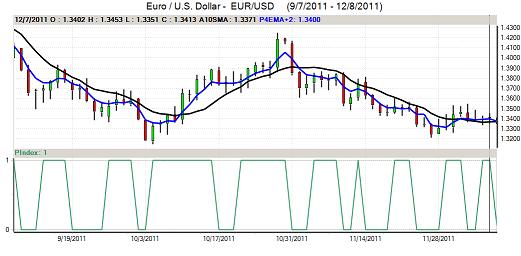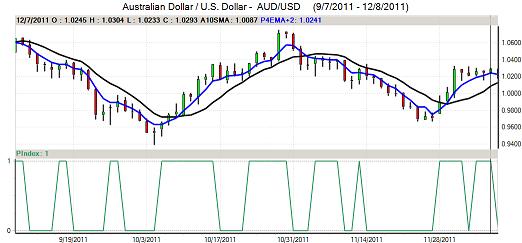EUR/USD
The Euro pushed to a high in the 1.2580 region against the US dollar early in the European session, but it was unable to make a break above the 1.26 area and selling pressure resumed ahead of the US open as fears surrounding the Spanish economy increased.
Spanish yield spreads widened to a fresh record high of over 515 basis points over German bunds which reinforced fears over the Spanish outlook. There were further uncertainties surrounding the proposed bailout for Bankia and the ECB indicated that the proposed bailout plan of issuing bonds would not be accepted which further damaged confidence. The Bank of Spain Governor is also set to leave office a month early.
There was further speculation that Spain could move very quickly towards needing some form of bailout, especially if yield spreads continue to widen. There were also major concerns surrounding the European banking-sector collateral as fear ratcheted higher.
The Italian bond auction will be watched closely on Wednesday and a sharp rise in yields would reinforce contagion fears. There were further rumours that the ECB would look to announce some form of bank-recapitalisation plans, which maintained volatile trading conditions. As far as the data is concerned, there was a weaker than expected -0.2% decline in German consumer prices for May which increased speculation over a cut in ECB interest rates.
As far as the US data was concerned, the Case-Shiller index was broadly in line with expectations with a 2.6% decline in house prices in the year to March. There was an unexpected decline in consumer confidence to 64.9 for May from a revised 68.7 the previous month which maintained doubts surrounding the spending outlook, although the immediate impact was limited.
Later in the US session, there was a downgrading of Spain’s credit rating by Egan Jones which served as a fresh trigger for fresh selling pressure on the Euro, although it looked to be the case that markets were looking for an excuse to sell. The drop to below 1.25 triggered stop-loss Euro selling with lows near 1.2460, the weakest level since July 2010 and a rally back to 1.25 quickly reversed.

Source: VantagePoint Intermarket Analysis Software
Call now and you will be provided with FREE recent forecasts
that are up to 86% accurate* 800-732-5407
If you would rather have the recent forecasts sent to you, please go here
Yen
The dollar advanced to a high in the 79.60 area against the yen on Tuesday before retreating to lows below 79.40 due to a combination of weaker risk appetite and a weaker than expected US consumer confidence reading. The dollar recovered back to the 79.50 area despite further downward pressure on US Treasury yields.
Bank of Japan Deputy Governor Yamaguchi suggested that the bank had done enough to support the economy at this stage with no further policy moves likely for now. He did not rule out further action, especially if the Euro-zone situation deteriorated further and the dollar held just below the 79.50 level.
Sterling
Sterling was unable to sustain a move above the 1.57 level against the dollar in Europe on Tuesday and retreated to test support levels. The latest CBI retail sales survey was much stronger than expected with a figure of 21 for May from -6 previously and there was also a strong reading for June expectations which helped boost confidence.
Bank of England MPC member Dale stated that it would take time for quantitative easing to take effect and he cautious over the need for further easing. Nevertheless, there were still expectations that the Bank move to additional bond purchases.
There was fresh selling pressure during the New York session with Sterling lows just below 1.5610 where support levels held. Defensive considerations will remain very important in the near term and UK bond-yield trends will be watched very closely over the next few days.
Swiss franc
The dollar dipped to lows near 0.9550 against the franc on Tuesday before securing fresh buying support. There were sharp gains during US trading with a fresh 2012 peak around 0.9640 as the US currency was able to secure widespread gains. The Euro dipped back to lows below 1.2010 against the Swiss currency.
There were further fears surrounding the Euro-zone outlook with the potential for continuing capital flows into the franc. There was speculation that the National Bank would have to increase intervention or move to introduce some form of capital controls in order to preserve the 1.20 minimum Euro level.

Source: VantagePoint Intermarket Analysis Software
Call now and you will be provided with FREE recent forecasts
that are up to 86% accurate* 800-732-5407
If you would rather have the recent forecasts sent to you, please go here
Australian dollar
The Australian dollar hit resistance close to 0.99 against the US currency on Tuesday and was then generally on the defensive with lows at the 0.98 level, although volatility was high.
There were reports from news agencies dampening expectations of a substantial Chinese stimulus package and this was instrumental in undermining risk appetite as regional growth fears increased again. The currency was also undermined by a generally weak tone in commodity prices.
A weaker than expected 0.2% decline in retail sales for April helped push the Australian dollar below the 0.98 level as it reinforced expectations of a further interest rate cut in June.



